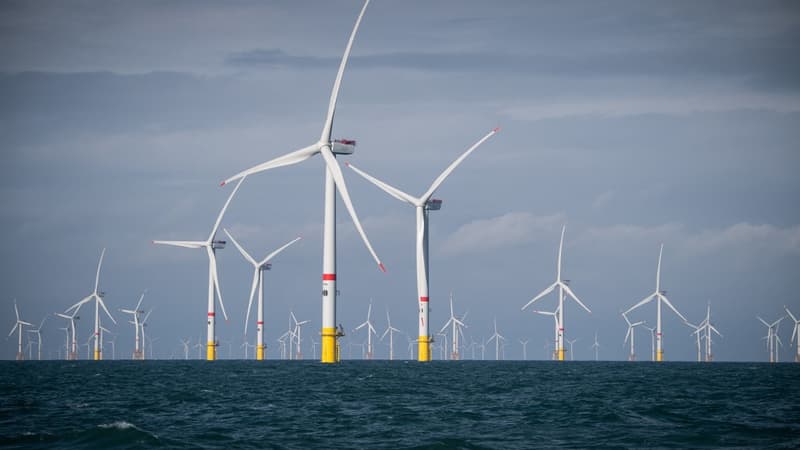Affirm France’s future place among the leading nations in terms of offshore wind energy. This is the challenge of Emmanuel Macron’s participation in the second North Sea summit that takes place this Monday, in the company of nine heads of state and government.
And for good reason, France is falling behind, as Emmanuel Rollin summed up on the set of BFM Business on Monday morning. “With 0.5 gigawatts (GW) of wind power installed in France, we can compare the 14 GW installed in the United Kingdom, which started long before us,” says the CEO of Iberdrola France.
In fact, more than 95% of the electricity production at sea is distributed among five countries in the world. Behind the Chinese leader, the other four are European with, therefore, the United Kingdom, followed by Germany and its 8 gigawatts and Denmark, a pioneer in the matter, which obtains 20% of its electricity from offshore wind energy.
Target 40 gigawatts in 2050 for France
As the renewable energy acceleration law recently demonstrated, France is betting heavily on the development of offshore wind turbines and should quadruple its production capacity by the end of the year. Following the inauguration of the first grid-connected offshore wind farm in Saint-Nazaire a few months ago, other sites are currently under construction in Saint-Brieuc, Fécamp and Courseulles-sur-Mer. During his now famous Belfort speech, Emmanuel Macron set a target of 40 GW produced by 2050.
Therefore, many projects are in the pipeline throughout the maritime region, such as in Dunkirk or in the Mediterranean Sea. “The renewable energy acceleration law is positive for offshore wind power because it launches the programming and we absolutely need visibility, estimates the general director of Iberdrola France. We need to know where and when there will be tenders. We are a market volume, we must give security to industrial investors or developers”.
Europe sets big ambitions for wind power
The stakes are high for France, but also for Europe in general. On a continental scale, the acceleration of offshore wind should make it possible to reach 60 gigawatts produced in 2030 and 300 gigawatts in 2050. An objective comparable to the production of 250 nuclear reactors and that would make offshore wind the main source of renewables for ahead of hydraulic and solar.
Much of this carbon-free electricity will be used to produce green hydrogen to power factories or even to make synthetic fuels for aeronautics, hence the need for substantial quantities. The industry has yet to keep up. “In offshore wind there are also losses for installers and a lack of ships: there is a need for investment in port facilities,” insists Emmanuel Rollin.
During this North Sea summit, floating wind energy will also be discussed, a technology that is still immature but that should allow the installation of much denser and more numerous fields and also far from the coast, that is to say in areas where it is not possible to build wind turbines. conventional marine with foundations. Also, there is a supply problem as wind turbine magnets are made of neodium, a rare material that is often imported from China.
Source: BFM TV


